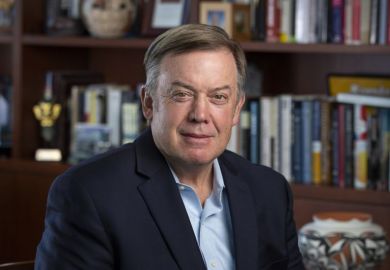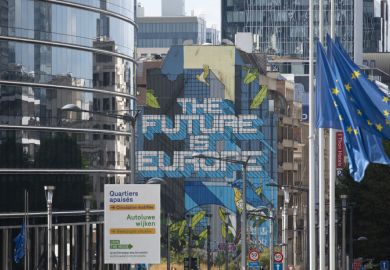Arizona State University is creating a new centrepiece laboratory for environmental solutions, vowing to lead academia in battling dire global threats by embracing private sector allies.
ASU sees the venture – filling a new $200 million (£150 million) headquarters, the largest research building on ASU’s Tempe campus – as crowning a two-decade effort by its president, Michael Crow, to convert university science into societal impact.
Professor Crow led the creation of the renowned Earth Institute at Columbia University, and then came to ASU in 2002 preaching the importance of getting universities to work beyond their traditional interdisciplinary boundaries.
The goal of the new 550-scientist lab, Professor Crow said, was to replicate for planetary health what universities did for human health when they combined chemistry, biology, engineering, physics and materials sciences to raise up the field of medicine.
“It’s a medical school for our relationship with the Earth,” Professor Crow said of the new Global Futures Laboratory.
The Global Futures Laboratory and its embedded 1,300-student College of Global Futures will be led by Peter Schlosser, a vice-president at ASU who also came from Columbia and the Earth Institute, and draws lessons from mistakes he saw there.
“I would not say that the Earth Institute failed,” Professor Schlosser said. “But where it did not reach the kind of trajectory that Michael and myself and others had hoped was that translation into action.”
A major initial example where the Global Futures Laboratory believes it will show real-world results is an ASU-invented technology known as “mechanical trees” – a massive planned network of two-storey-high filtering structures that can suck carbon dioxide from the atmosphere.
The devices trap carbon dioxide in discs that can be sold for industrial uses such as greenhouses or carbonised beverages. Professor Schlosser and the technology’s chief inventor, Klaus Lackner, an ASU professor of engineering, helped form a company, Silicon Kingdom Holdings, that is one of several hoping to turn a profit from such sales.
But the global climate problem will require “a few million” of the extraction units, Professor Schlosser acknowledged, which ultimately will demand public investment on a scale not accepted by taxpayers.
Jacqueline Klopp, co-director of the Earth Institute’s Center for Sustainable Urban Development, said she agreed that some of its past efforts deserved criticism.
An oft-cited example is the Earth Institute’s Millennium Village Project, which tried to end poverty in about a dozen sub-Saharan villages but failed to meet more than half its goals. It was among several projects marked by oversimplified attempts at technical remedies that “were a complete and predictable failure”, Dr Klopp said.
Such experiences, however, may offer caution against pursuing even more projects that try to solve the world’s major economic and environmental problems without fully addressing the human behavioural factors that lie behind them, she said.
Working on non-technical solutions is “much harder, but closer to where you need to be impactful”, Dr Klopp said.
Professor Schlosser promised that the Global Futures Laboratory would have a major role for the social sciences. In part, he said, ASU hopes it can build public support for fighting environmental destruction by convincing enough companies that there is economic value in planetary preservation.
But, he said, the Global Futures Laboratory will respect limits on how deeply it can get involved in the political processes that may ultimately determine whether an idea such as mechanical trees is brought to fruition, and then blocks more pollution than it encourages humans to emit.
“Taking it on, on the same level as the lobbyists, is probably not something that makes sense for us,” Professor Schlosser said of industrial pollution. “But where we do actually see that we can have success is working with big companies to turn them around.”
Register to continue
Why register?
- Registration is free and only takes a moment
- Once registered, you can read 3 articles a month
- Sign up for our newsletter
Subscribe
Or subscribe for unlimited access to:
- Unlimited access to news, views, insights & reviews
- Digital editions
- Digital access to THE’s university and college rankings analysis
Already registered or a current subscriber? Login








